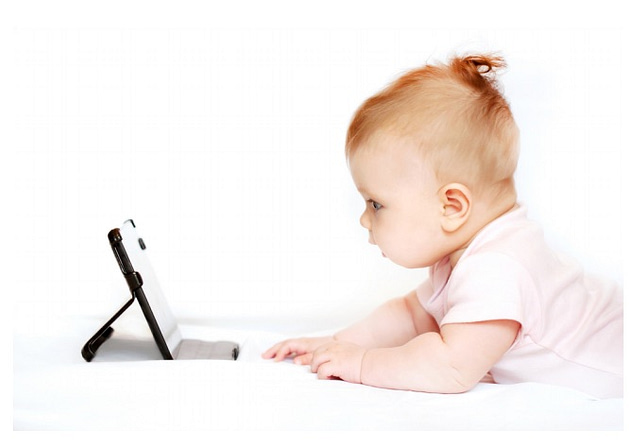
Dear Ms. Smartphone: My oldest sister had a baby boy eight years ago and her baby doctor told her no screen time until two years of age. I had a girl last year, and was surprised when the same doctor (we both go to her) said that the guidelines had changed. Her professional society is saying it is OK now for younger babies to have screen time. My sister and I compared notes and wonder why they changed because babies are babies. Sydney, Weston
Dear Sydney: You are lucky that your pediatrician took the time to talk about media time with you. I once read that just fifteen percent of parents said that their pediatrician discuss media use yet Pew polling in 2020 finds that 61% of parents say they depend on doctors for screen advice! The professional society you are referring to is the American Academy of Pediatricians (APA). They have a long history of trying to explore the role of screen time, publishing research, and tinkering with the recommendations.
The 2016 guidelines suggested that children under 18 months stay unplugged. Prior to that they recommended no screen time until age 2.
18 and under.
There is a long form that accompanies the 2016 APA reset- that’s what your pediatrician was referencing. The Academy recommends that parents stay involved with their children’s media use and set boundaries, that they carefully select content, and encourage co-watching. If the APA lowered the age, then they upped the stakes for parental involvement. There was one exception: the 2016 guidelines said it was OK for kids under 18 months to engage in video chatting. Presumably that was for keeping up with long distance grandparents and family, or, cynically, did they anticipate the burgeoning growth of pediatric visits and telemedicine?
Of course, children have not changed in the past eight years, nor do they grow up faster- so why did the APA change? I will try to update this when I have more direct knowledge and interviews. The best I can tell is that the Academy needed to keep pace with modern trends. Parents wanted guidance, and the professionals recognized that they did not have a robust body of research on the effects of new digital media. Between 2000 and 2016 there was a proliferation of technology.Streaming media opened viewing up 24/7 and released the content from FCC oversight.
Head Starts:
Not surprisingly, time spent in front of screens exploded for infants, toddlers, and preschoolers over the same time period. Today, ninety percent of young children use a handheld electronic device by the age of one, and in some cases, when they are only a few months old. A British study in 2017 found that 10% of children ages 3-4 had their own tablet and 53% of these were online, for nearly 9 hours a week. During covid these rates skyrocketed as preschools closed and more parents worked from home.
So, to address your question, the APA wanted to keep up with the trends and stay relevant to parents. If you and your sister want help sorting out the digital guidelines you can go to Commonsense Media. This parent centric site reviews content options, summarize the state-of-the-research., and more.
By the way, the APA guidelines do not say ‘No’ to media and TV- they simply discourage its use. Surprisingly, the concerns are less about content and more often about the time that watching TV or screens displaces. Keep in mind that for every hour of television that a child younger than 2 years watches alone, he or she will spend an additional 60 minutes less time per day interacting with a parent or sibling, and engaging in other types of play. The issue is that television displaces more developmentally valuable activities that stimulate cognitive growth and motor skills. Research continues to find correlation (not causality) between early television viewing and developmental problems. BTW, many families have the TV on at least six hours a day as background noise- that counts too!


Leave a Reply
You must be logged in to post a comment.